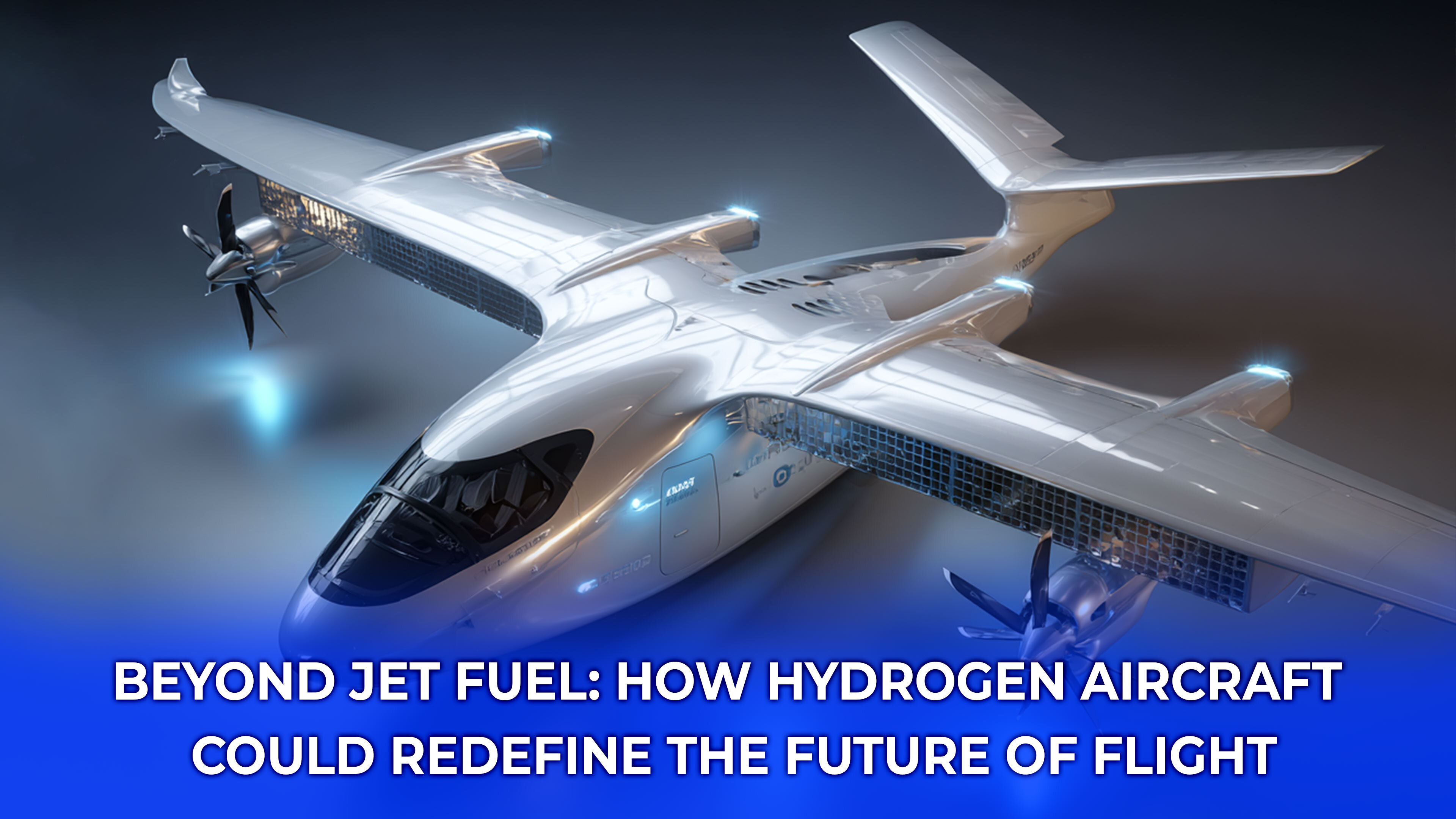



Beyond Jet Fuel: How Hydrogen Aircraft Could Redefine the Future of Flight
For over a century, aviation has depended on fossil fuels to carry millions of passengers and tons of cargo across the globe. But this reliance comes at a steep cost: aviation accounts for around 2-3% of global carbon emissions, a figure expected to rise as air travel demand grows. To truly decarbonize the skies, aviation must go beyond efficiency tweaks and biofuels. Enter hydrogen — a clean, energy-dense fuel that many experts believe could redefine the future of flight.
Why Hydrogen?
Hydrogen stands out for two key reasons:
Zero Carbon at the Source – When hydrogen is used in a fuel cell, its only by-product is water vapor, making it a truly zero-emission alternative.
High Energy Density – Hydrogen contains about three times more energy per kilogram than jet fuel, offering the potential for longer flights if storage challenges are solved.
Unlike batteries, which are heavy and limit range, hydrogen provides a pathway to power not just regional flights, but eventually long-haul travel as well.
How It Works
There are two main pathways for hydrogen in aviation:
• Fuel Cells: Hydrogen combines with oxygen in a fuel cell to generate electricity, which powers electric motors.
• Hydrogen Combustion: Hydrogen can also be burned in modified jet engines, similar to how conventional aircraft operate — but with fewer emissions.
Both approaches are being tested, and future hydrogen aircraft could use a hybrid of the two technologies.
The Advantages
• Climate Impact: Virtually no CO₂ emissions, helping aviation meet net-zero targets.
• Noise Reduction: Hydrogen fuel cells are quieter than traditional engines, potentially reducing airport noise pollution.
• Energy Security: Hydrogen can be produced locally, reducing dependence on imported jet fuel.
The Challenges
While hydrogen promises a cleaner future, it also faces real obstacles:
• Storage: Hydrogen must be stored at -253°C as liquid or under high pressure, requiring new tanks and infrastructure.
• Infrastructure: Airports will need hydrogen production, storage, and refueling systems — a massive investment.
• Cost: Producing green hydrogen (from renewable energy) is still expensive compared to fossil fuels.
• Public Perception: Safety concerns about hydrogen, despite its proven use in other industries, need to be addressed.
The Race to the Skies
Several companies are already pioneering hydrogen aviation:
• Airbus has unveiled hydrogen-powered concepts under its ZEROe program, targeting 2035 for entry into service.
• ZeroAvia has successfully flown small hydrogen fuel-cell planes and is working on scaling up.
• Universal Hydrogen is developing modular hydrogen capsules to simplify airport refueling.
Governments in Europe, the U.S., and Asia are also pushing billions of dollars in hydrogen research and infrastructure investment.
What It Means For Passage
Flying on a hydrogen plane may feel no different inside the cabin, but the experience could be quieter, cleaner, and more sustainable. Passengers may also notice shorter boarding times at airports that adopt futuristic hydrogen hubs.
Conclusion
Hydrogen aircraft are more than an engineering dream; they represent a new era of aviation where sustainability is built into the wings themselves. While challenges remain, the momentum is undeniable. With governments, airlines, and manufacturers aligned on net-zero targets, hydrogen could take flight not just as a fuel of the future — but as the defining innovation that reshapes aviation for generations to come.
Writer’s Thoughts:
Hydrogen is not just another buzzword in sustainability; it’s a genuine leap forward for aviation. The technology is young, but progress is accelerating. The real test will be whether governments, airports, and airlines invest fast enough to make hydrogen more than a promise. I believe the shift won’t be gradual — when the first commercial hydrogen planes succeed, the industry will pivot rapidly. The sky is watching.


